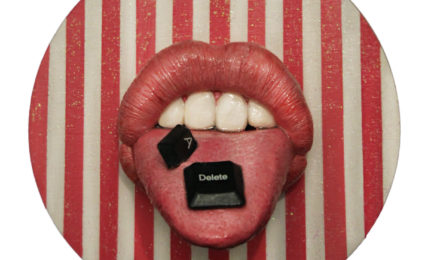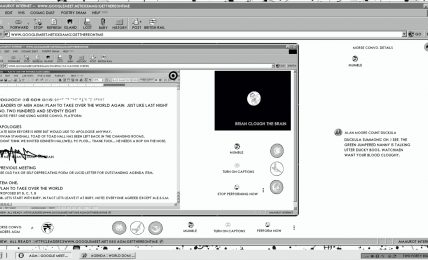In an increasingly digital world what is happening to the artifact? Essays, art, and digital histories all exist online, in a space independent from the physical realm. Kenta Murakami writes:
“I am not asking about replacing objects with digital replicas, but asking about the creation of independent digital objects. The Internet has become assumed. We now check BuzzFeed or Tumblr on our phones without even processing that we’ve entered an entirely virtual realm. We see the Internet as an opaque interface that is navigated by mouse or, hell, even finger – the network is synonymous with the plastic block through which we access it. Rather than a horizontal arrangement of self-published information, the net is now segmented into Facebook, Twitter, YouTube, Wikipedia, Pinterest, Flickr–A list of commercial entities catering to a specific consumer need; entities whose content-creation, despite being open to all, is filtered through algorithms based upon their mass-determined attention capital. The possibility for net.art died with this transition.” (The Demise of Net.Art: A Look at Artifacts Past, 2013)
Just like the physical, digital data can become dated and obsolete. But what makes an “artifact” in a digital space? While there are many pieces of net.art, several mentioned in Murakami’s piece, that have become outdated or that are no longer supported by their respective platforms, the study of these “digital artifacts” remains under-explored.
This collection pulls together five pieces that address the concept of the “digital artifact.” In addition, the collection itself is comprised of “artifacts” pulled from the Digital America archive. Below are links to pieces, we hope you enjoy.
:::
Alternative Artifact (2017) is a series of digitally fabricated images of objects with “indeterminable origin” in a style that mimics traditional museum archival photos. The series questions the usefulness and information provided by a digitized artifact through the invention of these “alternative” artifacts.
Endangered Data (2018) was designed to preserves sensitive data, but it requires a unique algorithm to retrieve the information. An art piece encrypted with information, this piece was designed to intentionally to be a digital artifact—preserving sensitive information to be accessed in the future.
Digital Tattoo (2013) is an essay that discusses how images and information published on social media stay attached to an online profile like digital scars or tattoos. This piece speaks to the longevity and relevance of the digital artifact, specifically on social media platforms.
In Memoriam (2014) was an interactive memorial to the victims of mass shootings, but the website that housed the project is no longer available. These fractured remains, preserved in the Digital America archives tell us about the memorial that previously existed.
The Demise of Net.Art: A Look At Artifacts Past (2013) is an essay about early digital art. It describes early digital art pieces and the digital landscape surrounding them. This informative piece relates digital art to the traditional art world of museums and galleries, drawing comparisons between digital and physical art spaces.
:::
 Frances Gichner is a senior majoring in Classical Civilizations with minors in Anthropology, Archaeology, Art History, and Visual Media Arts Practice. She served as an Art Curator and Editor for Issue No. 15 of Digital America. She is interested in studying various types of art from ancient art to the digital.
Frances Gichner is a senior majoring in Classical Civilizations with minors in Anthropology, Archaeology, Art History, and Visual Media Arts Practice. She served as an Art Curator and Editor for Issue No. 15 of Digital America. She is interested in studying various types of art from ancient art to the digital.



